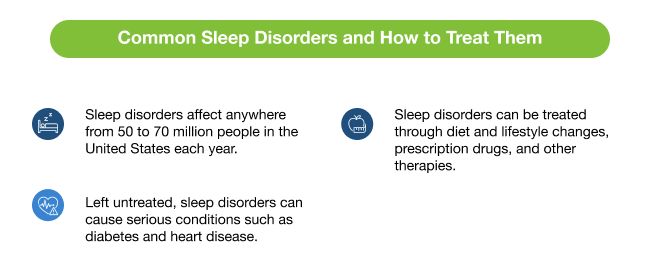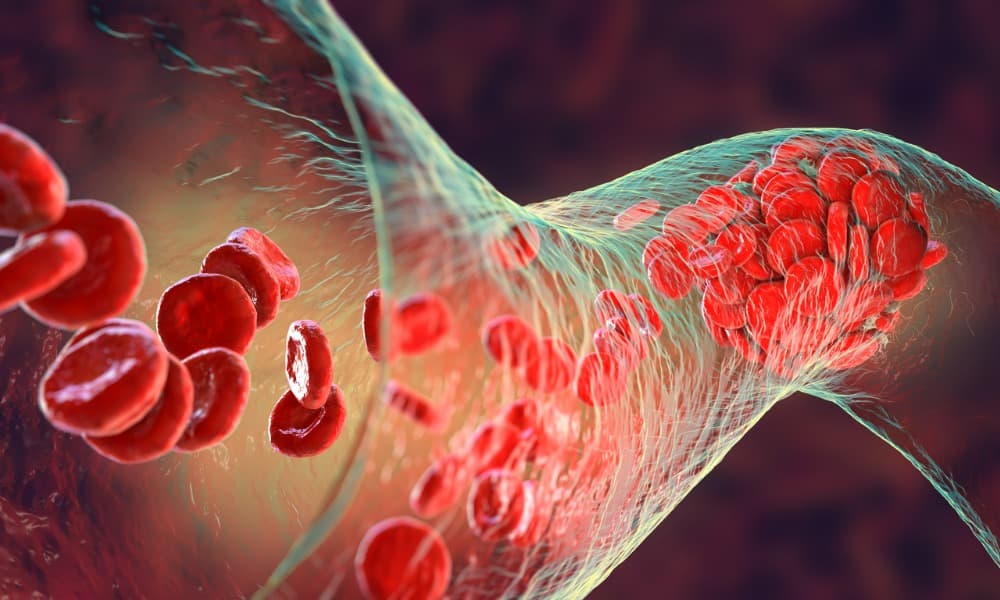If you have trouble falling asleep or staying asleep, it can lead to a whole host of health problems. Here’s what you need to know about getting the rest your body needs

Sleep disorders are incredibly common in the United States, so much so that an estimated 50 to 70 million Americans suffer from one or more of these conditions. Sleep disorders can range from mild, such as jet lag, to more serious health issues, such as narcolepsy. If left untreated, sleep disorders can bring about more serious conditions, including diabetes and heart disease.
Therefore, it’s always best to seek medical advice from a professional and tackle the issue from the root. In honor of National Sleep Awareness Month in March, this blog will explore seven of the most common sleep disorders and how to treat them. Keep reading to get informed.
1. Insomnia
The most common sleep disorder of them all is insomnia. Around 10% of adults admit to having chronic insomnia, and 30%-40% suffer from this condition now and then. Insomnia, of course, involves a lack of sleep, but it can manifest itself in several ways.
Symptoms may include:
- Trouble getting to sleep
- Waking up during the night repeatedly
- Feeling irritable during the day
- Difficulty napping despite exhaustion
Treatments for insomnia may include:
- Lifestyle changes
- Psychotherapy
- Antidepressants
- Medications such as benzodiazepine and non-benzodiazepine sedatives
2. Sleep apnea
Snoring may seem harmless, but, in reality, it occurs because your throat closes while you rest. If your breathing cuts off for more than a few seconds, it’s no longer snoring. Instead, this is known as sleep apnea. This chronic condition causes oxygen levels in your body to deplete and, if left untreated, can pose serious health risks, including heart failure, stroke, or even sudden death.
Symptoms of sleep apnea may include:
- Loud snoring
- Gasping for air during sleep
- Trouble staying asleep
- Waking up with a dry mouth
Potential treatments:
- Positional sleep aids
- Lifestyle changes and weight loss
- Positive airway pressure machines (PAPM)
- Surgical removal of throat tissue
3. Restless leg syndrome
Restless Leg Syndrome, or RLS for short, is both a sleep and movement disorder. As you begin to rest and attempt to get to sleep, your body is overcome with an uncontrollable urge to move your legs. Although this condition is not life-threatening, it can trigger serious feelings of anxiety and depression due to a lack of sleep.
Symptoms may include:
- Irresistible urge to move lower limbs
- Worsening urge to move whilst resting at night
- Relief of discomfort brought about by movement
Treatments:
- Weight loss
- Iron supplements
- Walking and stretching or rubbing legs
- Prescription medication such as Mirapex, Requip, or Lyrica
4. Jet lag
If you’ve ever traveled long distances and across time zones, you’ve probably experienced jet lag. This temporary sleep condition affects your body clock by disrupting your internal circadian rhythm.
Symptoms may include:
- Daytime fatigue
- Mood changes
- Lack of focus
- Constipation or diarrhea
Treatments may include:
- Sunlight or light box therapy
- Sleeping pills or melatonin tablets
- Physical exercise to keep awake
5. Circadian rhythm disorders
Circadian rhythm disorders, also known as sleep-wake cycle disorders, occur when your internal body clock is out of sync with your environment. Jet lag is a mild example of this disorder. Cell regrowth, hormone production, and brain wave stimulation are all linked to this cycle. Possible causes of circadian rhythm disorders include pregnancy, mental health issues, menopause, and Alzheimer’s or Parkinson’s disease.
Symptoms may include:
- Headaches and fatigue
- Trouble falling asleep or staying awake
- Poor concentration and coordination
Treatments:
- Bright light therapy
- Sleep medications, such as benzodiazepines
- Lifestyle changes, such as avoiding caffeine before bed and scheduling naps
6. Narcolepsy
Narcolepsy is a sleep disorder that entails excessive and uncontrollable fatigue. Individuals with this neurological disorder may suddenly fall asleep at inappropriate times, such as during work or while driving a car. Rather than entering the early stages of sleep, people with narcolepsy almost immediately enter the REM sleep cycle – the stage in which we may dream and suffer from muscle paralysis.
Symptoms of narcolepsy include:
- Excessive daytime sleepiness
- Hallucinations
- Sleep paralysis
- Sudden loss of muscle tone (Cataplexy)
Treatments include:
- Antidepressants
- Central nervous stimulants (modafinil or pitolisant)
- Sodium oxybate (Xyrem, Xywav) to treat cataplexy
7. Parasomnia
Parasomnia is a sleep disorder that occurs before falling asleep, during sleep, and just as you wake. It may include a range of disturbing events, experiences, and behaviors, such as night terrors, sleepwalking, sleep paralysis, and more. The underlying cause of parasomnia may be attributed to genetics, medication, or another sleep disorder, for example, sleep apnea.
Symptoms include:
- Waking up confused or disoriented
- Having no recollection of certain behaviors
- Daytime sleepiness or fatigue
- Difficulty sleeping throughout the night
Treatments:
- Therapy or counseling
- Adhering to a regular sleep schedule
- Changing medications
- Taking safety precautions, e.g. locking doors
Stop losing sleep over the price of prescription medication
A common reason for sleep disorders is excess stress, so make sure you’re not losing sleep over the rising costs of prescription medication. Managing a chronic condition can be incredibly taxing on your mental, physical, and even financial health. That’s why ModRN Health is dedicated to helping our customers secure the best prices for sleep medications.
Sign up for a free account today and start saving up to 80% on your prescriptions. Our easy-to-use price comparison tool allows you to scope the best prices in your area, so you can focus on what truly matters – getting your health on track.








